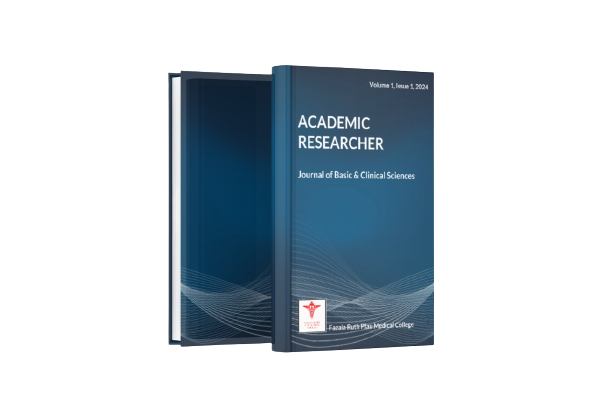

Academic Researcher
Journal of Basic and Clinical Sciences
Volume 02, Issue 01, 2025
An Official Journal of Fazaia Ruth Pfau Medical College, Air University
ISSN: 3008-0495 (Online)
ISSN: 3008-0487 (Print)
Influence of Parents Socioeconomic Status on Newborn Telomere Length
Sadia Farrukh
Acad Res. 2024, 1 (1): 2-5
DOI: https://doi.org/10.70349/ar.v1i1.4
Abstract
Background: Telomeres, the marker of biological aging, are substantially influenced by parental untoward exposures and their socioeconomic status (SES). This study aimed to find the association between parents–newborn leukocyte telomere length (LTL) among different SES highlighting reprogramming during fetal life.
Methods: The parents' and newborn blood samples (n = 612, 204 each) were collected from September 2021 and July 2022, from Ziauddin Hospitals, Karachi. The real time PCR was used to quantify telomere length (T/S ratio). IBM statistical package for the social sciences (SPSS) was used to carry out analyses and graphs were formed by using GraphPad prism. A P-value of <0.05 was considered statistically significant.
Results: The mean age of mothers range between 25-35 (27.5%) and fathers <25 years (55.9). The mothers and their newborns in the upper middle SES had significantly longer LTL (2.7±1.30, 2.14±1.39, p<0.001). Whereas low SES group showed insignificant difference between (Newborn vs. mother). Among father newborns Upper middle and high SES groups showed significant differences in TL (p=0.001). Longer TL was seen in father-newborn of the upper middle group (2.69+1.37; 2.79+1.30) with significant difference (p=0.001).
Conclusion: Newborns had longer TL compared to their parents, highlighting the in-utero reprogramming in all socioeconomic groups. These findings show the importance of risk factors and their comprehensive understanding and their significance in contributions during vital beginning period of newborns' TL.
Keywords
Telomere, telomerase, telomere length (TL), socioeconomic status (SES).







